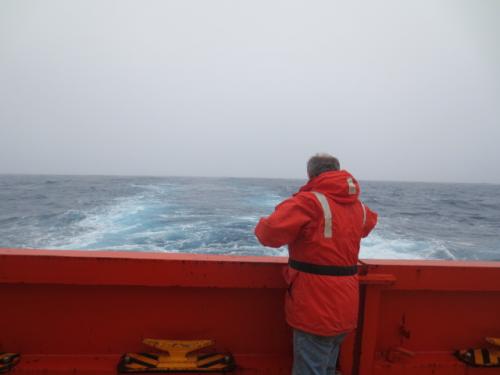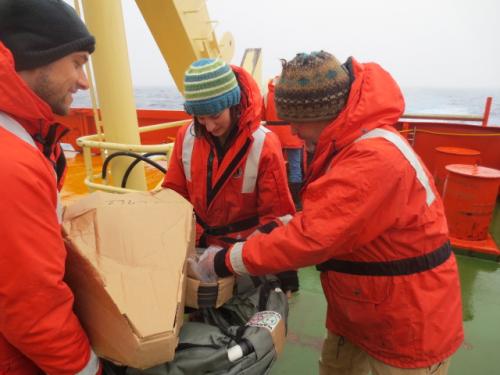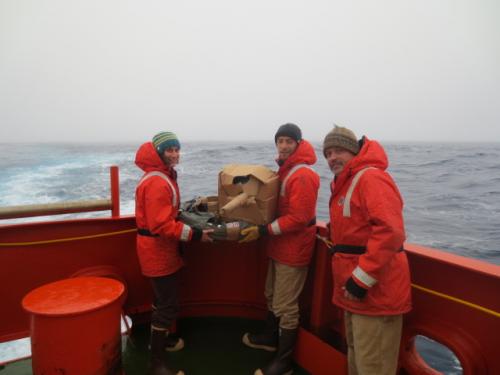Releasing the first drift buoy
Our expedition is now in its 4^th day of transit. During this time the scientists and their assistants along with the ships staff worked tirelessly planning and preparing.

They continue to do so.Prior to departure they worked 5 days in port preparing for the important research they will be performing on board. Today begins shift work.This means the teams of researchers will divide their time into two 12 hour shifts. I got the 12pm to 12am shift. Everybody is trying to adjust their sleep patterns to prepare for the weeks ahead.Lots of coffee! I wish you could see all the behind the scenes work that is done. It is amazing the work these folks do to make sure nothing is left to chance. It appears that we will be able to reach our intended destinations. Keep your fingers crossed!


In a simple act of deploying a drift buoy overboard, some say the science began. These buoys also known as SVP-Barometer Drifters are released at specific latitudes (55, 56, 57,58 etc.). A latitude as I was told is approximately 60 nautical miles. As each degree is divided into 60 minutes a nautical mile equals 1 minute on the earth's surface. Thanks Captain Sebastian for setting me straight on the difference between a mile and a nautical mile!As its' name suggests the drifter travels with the currents and transmits important physical data back to the scientists. It was fun to be able to help in some small way with the research. I'm looking forward to more! Happy sailing.


Comments